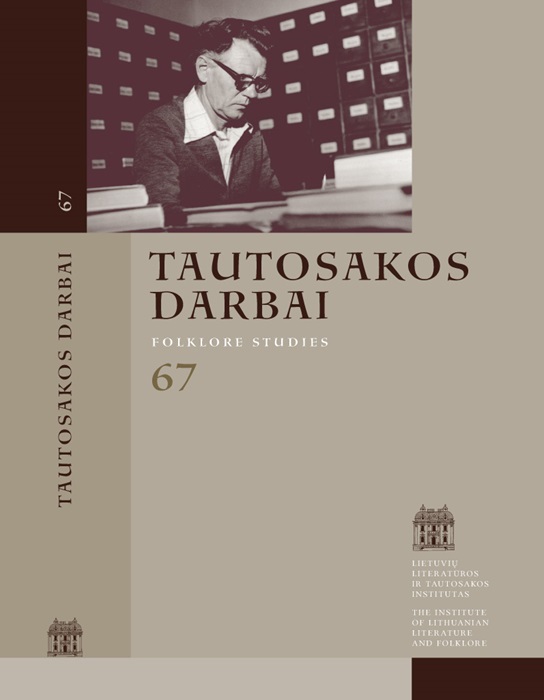Women Storytellers and Peculiarities of Their Repertoire
Abstract
According to ethnographic data from various countries, from the end of the 19th to the first half of the 20th century men became predominant storytellers, since their mobile way of living enabled them to enrich their repertoire. Women’s role, on the other hand, resembled that of the mediators, preserving and transmitting folktales that men created or brought home from remote places. Women did play a significant role in the folktale tradition; however, in the Lithuanian folklore research, women storytellers have not been given similar attention as folksingers. Women exhibit special sensitivity towards their surroundings and greater emotionality, which affects the style of their storytelling. The everyday routines, childcare duties, and lower social status in village communities used to significantly impact their favored repertoire. Women’s storytelling mostly evolves around their closest family members – their children. Being involved in the process of their upbringing, mothers would intuitively select folktales that would best suit the age of their children in terms of genre and complexity. They favored folktales with little girls as protagonists – either treated unjustly or belonging to the lower social sphere. Since women storytellers usually spent evenings with girls, either spinning or knitting, the girls would listen to their stories and take note of their characters as well as stereotypical behavior patterns, being able to subsequently recreate these compositions and pass them on to their offspring. Thus women storytellers shaped a singular culture of folktales, standing out both in terms of its repertoire and style.
This article aims at evaluating the role of the Lithuanian women storytellers in the traditional community and describing general features of their repertoire. As a research method, context analysis is employed. The chronological boundaries of the analyzed folklore and ethnographic material encompass the 19th century and the first half of the 20th century; however, fragments of repertoire and biographic details of one storyteller recorded as late as the 21st century, are also included.

This work is licensed under a Creative Commons Attribution 4.0 International License.
Downloads
Most read articles by the same author(s)
- Jūratė Šlekonytė, The Folktale Narrator at the Turn of the 20th – 21st Century: the Case of Antanina Čaplikienė from Subartonys , Tautosakos darbai: Vol. 64 (2022)
- Jūratė Šlekonytė, Lithuanian Fairy Tale “Bearskin” (ATU 361): European Context and Local Peculiarities , Tautosakos darbai: Vol. 66 (2023): Tautosakos darbai
- Jūratė Šlekonytė, A Hundred Years of the Lithuanian Folktale Research: from the Traditional Comparativism to the Modern Methods , Tautosakos darbai: Vol. 49 (2015)
- Jūratė Šlekonytė, August Schleicher as the First Publisher of Lithuanian Folktales , Tautosakos darbai: Vol. 61 (2021)
- Jūratė Šlekonytė, A New Book on Wondertale Symbolism , Tautosakos darbai: Vol. 67 (2024): Tautosakos darbai
- Jūratė Šlekonytė, Phenomenon of Popularity of the Lithuanian Folktale “The Sister as Duck” , Tautosakos darbai: Vol. 57 (2019)
- Jūratė Šlekonytė, The First Volumes of the Fundamental Edition of the Czech Folktales , Tautosakos darbai: Vol. 64 (2022)
- Vita Džekčioriūtė, Aušra Žičkienė, Jūratė Šlekonytė, Gražina Kadžytė, Jurgita Ūsaitytė, Lina Būgienė, Daiva Vyčinienė, Chronicle , Tautosakos darbai: Vol. 48 (2014)
- Jūratė Šlekonytė, The Lithuanian Legends of the Wild Hunt: Regarding Origins of the Image , Tautosakos darbai: Vol. 47 (2014)
- Jūratė Šlekonytė, Do We Need Folktales? Bruno Bettelheim Answering , Tautosakos darbai: Vol. 55 (2018)
